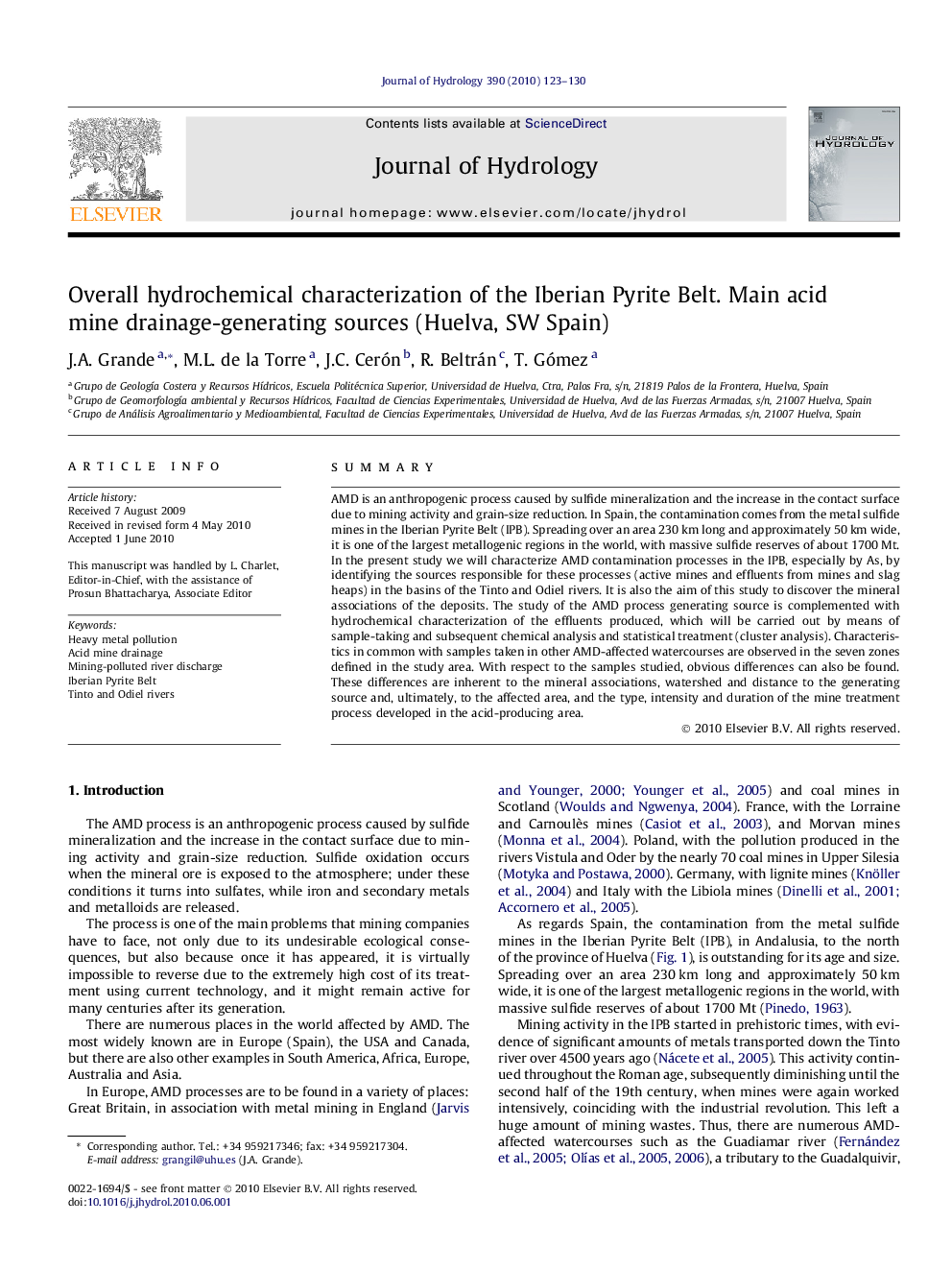| Article ID | Journal | Published Year | Pages | File Type |
|---|---|---|---|---|
| 4578028 | Journal of Hydrology | 2010 | 8 Pages |
SummaryAMD is an anthropogenic process caused by sulfide mineralization and the increase in the contact surface due to mining activity and grain-size reduction. In Spain, the contamination comes from the metal sulfide mines in the Iberian Pyrite Belt (IPB). Spreading over an area 230 km long and approximately 50 km wide, it is one of the largest metallogenic regions in the world, with massive sulfide reserves of about 1700 Mt. In the present study we will characterize AMD contamination processes in the IPB, especially by As, by identifying the sources responsible for these processes (active mines and effluents from mines and slag heaps) in the basins of the Tinto and Odiel rivers. It is also the aim of this study to discover the mineral associations of the deposits. The study of the AMD process generating source is complemented with hydrochemical characterization of the effluents produced, which will be carried out by means of sample-taking and subsequent chemical analysis and statistical treatment (cluster analysis). Characteristics in common with samples taken in other AMD-affected watercourses are observed in the seven zones defined in the study area. With respect to the samples studied, obvious differences can also be found. These differences are inherent to the mineral associations, watershed and distance to the generating source and, ultimately, to the affected area, and the type, intensity and duration of the mine treatment process developed in the acid-producing area.
